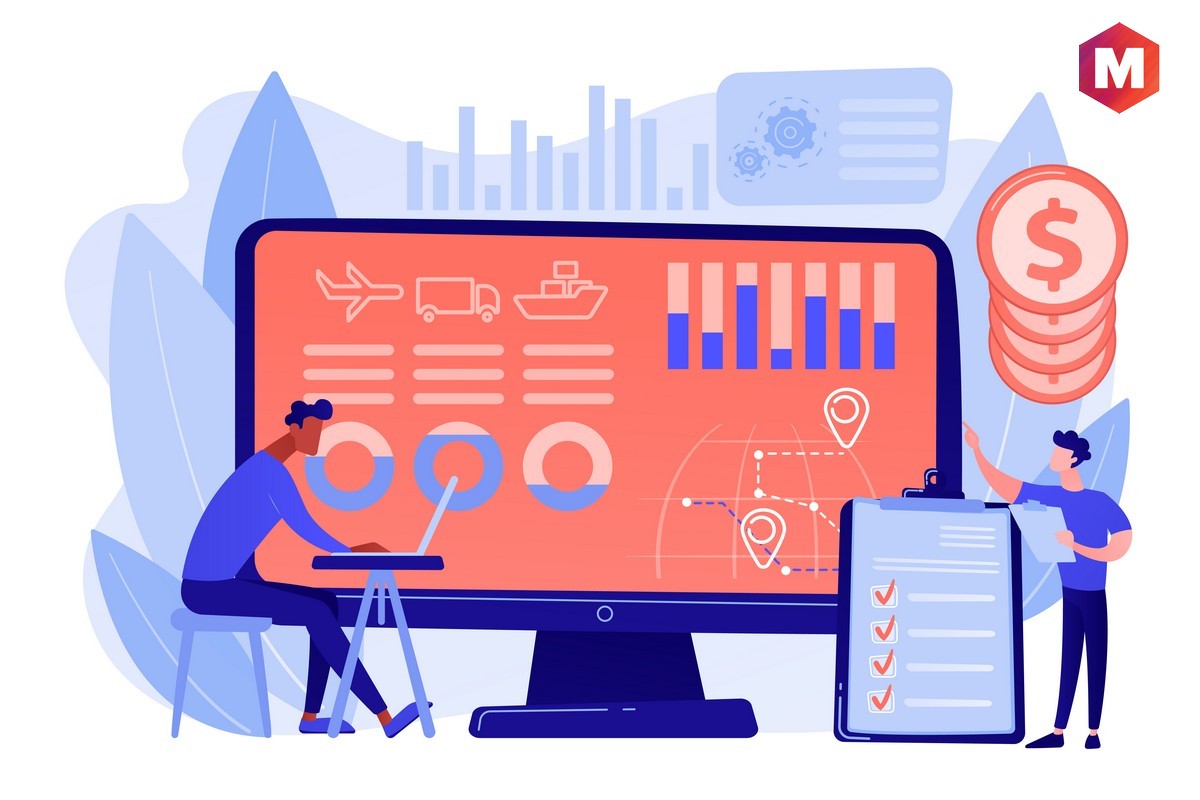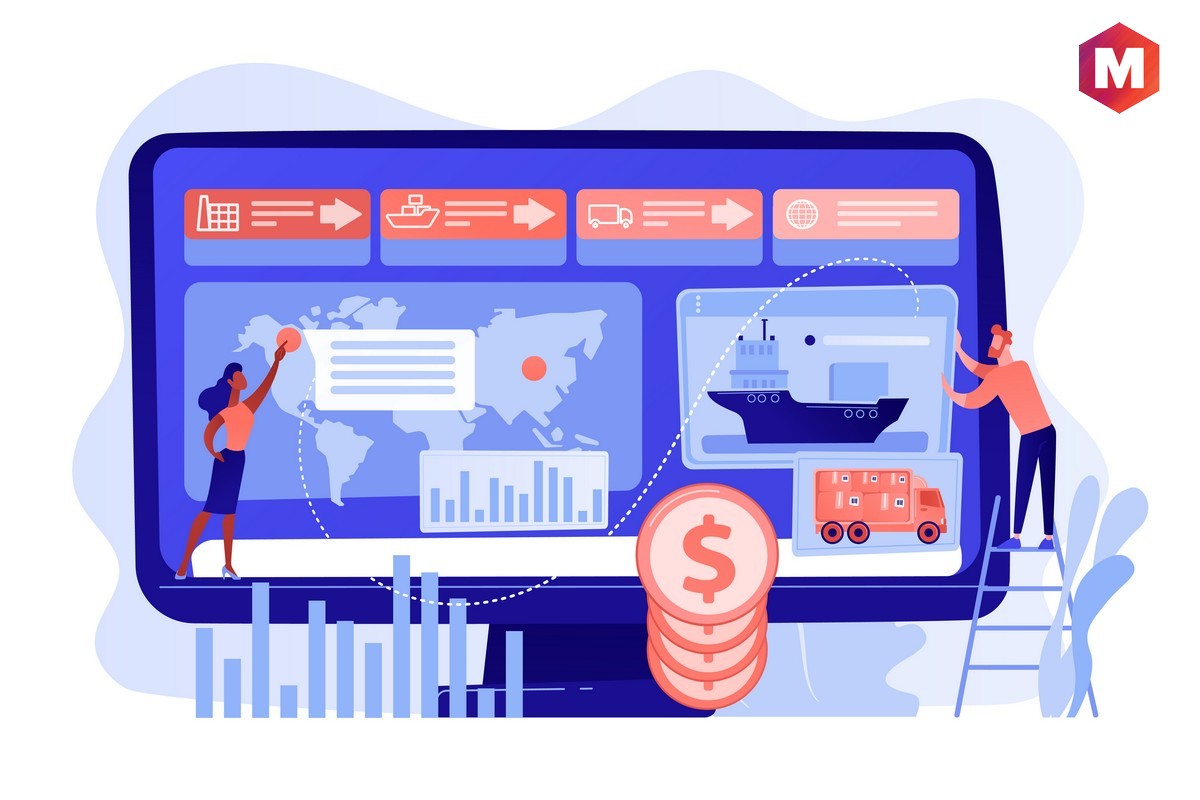Table of Contents
What is Delivered Pricing?
Delivered pricing is the price of a good or service that also includes the transportation cost. It is a type of pricing where the price of goods or services includes the cost of delivery. This can be helpful for businesses because it allows them to pass on the delivery costs to their customers, rather than absorbing them themselves. Delivered pricing can also be beneficial for customers, as it means they know exactly how much they will need to pay for their purchase, including delivery.
A manufacturer’s price quotes may correctly reflect the actual costs of transport to various areas, or they might be used to cross-subsidize regions in order to maximize sales.
Delivered pricing is sometimes also called shipping inclusive pricing, or transport-inclusive pricing. In transport economics, delivered pricing is the most general form of price discrimination. It involves setting different prices for identical goods delivered to different locations. The intuition is that the delivered price must be lower in locations where transportation costs are low and higher in locations where transportation costs are high in order for the firm to sell in both locations.
There are a few things to bear in mind when using delivered pricing, such as making sure that you include all relevant delivery costs in your prices, and that your prices are clear and easy to understand. delivered pricing can be a great way to make your business more efficient and give your customers peace of mind.
Meaning of Delivered Pricing
Delivered pricing is when the seller charges the same price for a product regardless of where it is sold. This means that the quoted price is the same price that the customer pays, regardless of any shipping or handling fees. Delivered pricing is also sometimes called single price, one price, or uniform delivered pricing. Hence, a product sold at the quoted price, with no additional seller charges for delivery has the delivered price.
There are several advantages to delivered pricing. First, it provides customers with a sense of predictability and fairness. Consumers know that they will be charged the same price for a product, regardless of where they purchase it. This can build trust between customer and seller. Additionally, delivered pricing can help to simplify the purchasing process, making it easier for customers to compare prices and make purchase decisions.
Methods of Delivered Pricing
Four common methods of delivered pricing are
1. Single Zone Pricing
In this approach, the company offers one delivered price to all customers, regardless of their location. The intuition is that the firm has determined that the delivered price must be the same in all locations in order for the firm to sell in all locations.
2. Multiple Zone Pricing
This method of pricing is used when the company offers different delivered prices to customers in different locations. The intuition is that the firm has determined that the delivered price must be lower in locations where transportation costs are low and higher in locations where transportation costs are high in order for the firm to sell in both locations.
3. Base Point Pricing
This delivered pricing method is used when the company offers a delivered price to all customers that is based on the transportation costs from a specific location, known as the base point. The intuition is that the firm has determined that the delivered price must be lower in locations where transportation costs are low and higher in locations where transportation costs are high in order for the firm to sell in both locations.
4. Freight-Absorption Pricing
This delivered pricing approach is used when the company offers a delivered price to all customers including the transportation costs. The intuition is that the firm has determined that the delivered price must be lower in locations where transportation costs are low and higher in locations where transportation costs are high in order for the firm to sell in both locations.
How Does Delivered Pricing Work?
In order for delivered pricing to work, businesses need to take into account all of the costs associated with delivery, including packaging, fuel, and labor. These costs can vary depending on the distance that goods need to travel, the size and weight of the goods, and the type of transportation used. Once all of these costs have been taken into account, businesses can then set their delivered prices.
It is important to note that delivered pricing only works if businesses are able to accurately calculate all of the relevant delivery costs. If businesses underestimate these costs, they may find themselves losing money on each delivery. On the other hand, if businesses overestimate these costs, they may find that they are not able to compete with other businesses that have lower delivered prices.
There are two main types of delivered pricing: flat rate and per-item.
- Flat rate delivered pricing means that the customer pays one set price for their entire order, no matter how many items they purchase. This type of delivered pricing can be helpful for businesses because it simplifies the pricing process and makes it easier for customers to understand. It also allows businesses to pass on their delivery costs to customers, rather than absorb them themselves.
- Per-item delivered pricing means that the customer pays a separate delivery fee for each item they purchase. This type of delivered pricing can be more expensive for customers, but it can also be more profitable for businesses. It is important to note that businesses need to take care when setting per-item delivered prices, as they can easily price themselves out of the market if their prices are too high.
When Should Delivered Pricing Be Used?
Delivered pricing can be a useful tool for businesses that sell products that are bulky or heavy, as it can help them to offset the high costs of delivery. It can also be a useful tool for businesses that sell products that are fragile or need to be delivered quickly, as it can ensure that customers are willing to pay for the higher costs associated with these types of deliveries.
Delivered pricing can also be a useful tool for businesses that operate in highly competitive markets. By using delivered pricing, businesses can ensure that they are able to compete on price without sacrificing quality or service.
When Should Delivered Pricing Be Avoided?
There are some situations where delivered pricing is not the best option. For example, delivered pricing is not typically used for products that are small and light, as the delivery costs are usually not high enough to justify the use of delivered pricing. Additionally, delivered pricing is not typically used for products that can be easily delivered by the customer themselves, such as groceries or clothes.
In addition, businesses should avoid using delivered pricing if they are unable to accurately calculate their delivery costs. This can lead to businesses either losing money on each delivery or pricing themselves out of the market.
Finally, businesses should avoid using delivered pricing if they are not able to deliver their products in a timely and efficient manner. If customers are not satisfied with the delivery process, they may be less likely to purchase from the business again in the future.
Advantages of Delivered Pricing
There are a few advantages of delivered pricing, such as
1. Helps businesses pass on delivery costs to customers
Delivered pricing can help businesses by allowing them to pass on their delivery costs to customers. This can be helpful for businesses, as it can offset the high costs associated with delivering products.
2. Can be used to compete on price
Delivered pricing can also be used to compete on price. By using delivered pricing, businesses can ensure that they are able to compete on price without sacrificing quality or service.
3. Can be used for products that are bulky or heavy
Delivered pricing can be a useful tool for businesses that sell products that are bulky or heavy, as it can help them to offset the high costs of delivery.
Disadvantages of Delivered Pricing
There are a few disadvantages of delivered pricing, such as
1. Can be more expensive for customers
Per-item delivered pricing can be more expensive for customers, as they need to pay a separate delivery fee for each item they purchase.
2. Can be difficult to calculate delivery costs
It can be difficult for businesses to accurately calculate their delivery costs, which can lead to them either losing money on each delivery or pricing themselves out of the market.
3. May not be suitable for products that are small and light
Delivered pricing is typically not used for products that are small and light, as the delivery costs are usually not high enough to justify the use of delivered pricing.
4. May not be suitable for products that can be delivered by the customer themselves
Delivered pricing is also typically not used for products that can be delivered by the customer themselves, such as groceries or clothes.
When deciding whether or not to use delivered pricing, businesses should consider the advantages and disadvantages of this pricing strategy. Delivered pricing can be a useful tool for businesses, but it is important to weigh the pros and cons before deciding if this pricing strategy is right for your business.
FOB vs. Delivered Pricing: What’s the Difference?
FOB (freight on board or free on board) and delivered pricing are two pricing strategies that are used to sell products. FOB pricing is a type of pricing where the buyer pays for the cost of shipping the product from the seller’s location to the buyer’s location.
Delivered pricing, on the other hand, is a type of pricing where the seller includes the cost of shipping the product in the price of the product.
There are a few key differences between FOB and delivered pricing, such as:
- FOB pricing is typically used for products that are small and light, while delivered pricing is typically used for products that are bulky or heavy.
- FOB pricing can be more expensive for buyers, as they need to pay for the cost of shipping. Delivered pricing can be more expensive for sellers, as they need to include the cost of shipping in the price of the product.
- FOB pricing is typically used for products that can be delivered by the customer themselves, while delivered pricing is typically used for products that need to be delivered by the seller.
Conclusion!
When deciding which pricing strategy to use, businesses should consider the type of product they are selling, the cost of shipping, and the delivery method.
FOB and delivered pricing are both pricing strategies that have their own advantages and disadvantages. Businesses should weigh the pros and cons of each pricing strategy before deciding which one is right for their business.
What are your thoughts about delivered pricing? Let us know in the comments below!
Liked this post? Check out the complete series on Business

